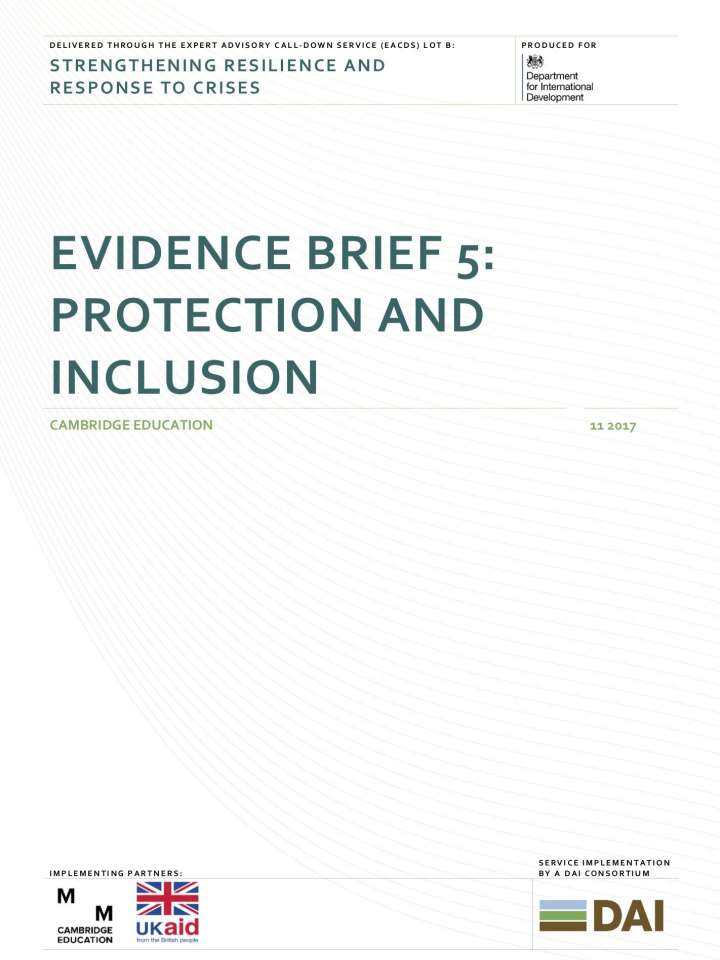Evidence brief 5: Protection and inclusion
Conflict, disasters, and state fragility have devastating effects on children’s lives, and further exacerbate challenges to providing inclusive education and child protection. The children who are most affected by exclusion and protection issues during emergencies are typically the most vulnerable and marginalised children in the community, such as girls, children with disabilities, children from ethnic or religious minorities, children without parental care, and children from the poorest segments of society. Thus, education can play a protective role in emergencies, providing a safe space for children and young people to receive support from responsible adults. Given this situation, this Evidence Brief is guided by the following research question: How can DFID (and its partners) ensure that formal/informal schools are safe spaces that protect children and are inclusive of the most vulnerable - particularly girls and children with disabilities?
This Brief aims to summarise what is and is not known about the protection and inclusion of the most vulnerable children during conflict, protracted refugee crises, and natural disasters. This Brief, uses a Save the Children definition of child protection systems: ‘a set of laws, policies, regulations and services needed across all social sectors to prevent and respond to abuse, neglect, exploitation and violence affecting children’. Inclusion is defined as responding to the diversity of needs among all learners through increasing participation in learning, cultures, and communities, and reducing exclusion from and within education. It involves changes in content, approaches, structures, and strategies, driven by a common vision that covers all children and the conviction that it is the responsibility of the regular system to educate all of them.
Explore further
